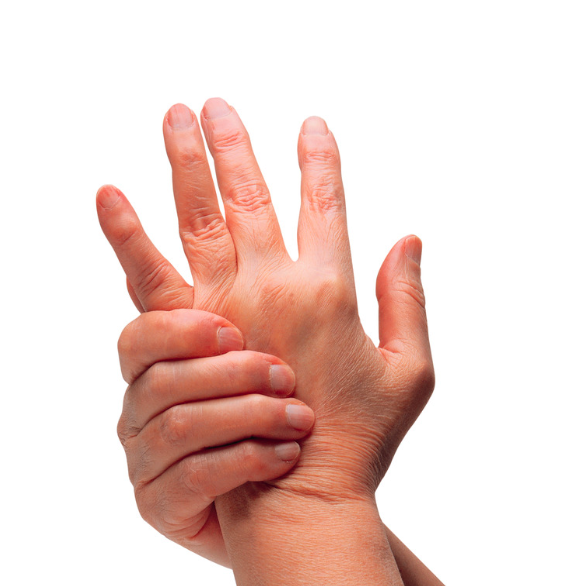Diagnosis and Treatment of Hand and Wrist Fractures in Wake County

What are Hand and Wrist Fractures?
Hand and wrist fractures are very common and encompass a wide range of injuries involving a break or crack in one or more of the bones in your hand or wrist. Hand fractures affect the small bones of the fingers (phalanges) and the long bones within the palm (metacarpals). Wrist fractures affect the scaphoid bone, one of the eight small bones that make up the wrist.

Causes of Hand and Wrist Fractures
A broken hand or wrist can be caused by a fall, crash injury, twisting injury, or direct contact during sports. For example, when someone falls and lands on an outstretched hand or wrist, the force from the fall — in combination with the angle of the wrist — may be strong enough to cause a fracture or break. Some common causes of hand and wrist fractures include:
- Sports injuries
- Car accidents
- Falls
- Diseases, such as osteoporosis or cancer
Symptoms of Hand and Wrist Fractures
Symptoms of a hand or wrist fracture vary depending on the location and severity of the break. In the case of a boxer’s fracture, your knuckle may look sunken in or depressed. This occurs when the end or “head” of the metacarpal bone is displaced or angulated. Common signs and symptoms of general hand and wrist fractures may include:
- Swelling
- Bruising
- Tenderness or pain
- Deformity
- Numbness in the hand
- Inability to move the finger(s)
- Shortened finger
- The injured finger crosses or “scissors” over its neighbor when making a partial fist
How are Hand and Wrist Fractures Diagnosed?
To diagnose a hand or wrist fracture, your doctor will ask about your symptoms and carefully examine your fingers and hand. They may also evaluate the tendons in your hand to ensure they are functioning properly and will check for instability in the joints near the fracture site. Imaging tests, such as an X-ray, can help identify the location and extent of the fracture. In certain situations, an MRI or CT scan may be ordered to give your doctor more detailed images and insights about the injury.

Treatment for Hand and Wrist Fractures at Raleigh Orthopaedic
If the broken ends of the bone aren’t aligned properly, there can be gaps between the pieces of bone or fragments might overlap. Your doctor can realign the bone fragments by gently manipulating them back into position without making an incision. This procedure is known as a closed reduction. A cast, splint, or brace may be applied to keep the bones in place while they heal, for about 3 to 6 weeks.
Some types of fractures can be protected by wearing a removable splint or by being “buddy strapped” to an adjacent non-injured finger. The non-injured finger acts as a “moving splint” to support the fractured finger. Gentle hand exercises can usually begin after 3 weeks.
Even after a closed reduction procedure and immobilization, your bones can shift. Some hand and wrist fractures require surgery to realign and stabilize the fracture fragments, including open fractures. Your Raleigh Orthopaedic doctor will make an incision to help reposition the bone fragments into their normal alignment. Small metal devices, such as wires, screws, pins, staples, and plates, may be used to hold the broken pieces of bone in place.

Recovery from Surgery for a Hand or Wrist Fracture
After surgery, you may have to wear a cast or splint for a period of time to protect the healing fracture. If the bone changes position during healing, your finger may lose some function. Your doctor will discuss with you when it is safe to begin range-of-motion exercises and resume normal activities. Most wrist fractures require six to twelve weeks of recovery before returning to normal activity. The wrist may be sensitive for months after surgery and it is normal to feel discomfort when attempting an activity for the first time.
How to Prevent Fractures of the Hand and Wrist
Because hand and wrist fractures occur by accident, it is impossible to fully prevent such an injury. There are some ways you can build strength and protect your bones from injury in case an accident occurs. You can build bone strength by eating a healthy diet of calcium and vitamin D, exercising, and avoiding or limiting smoking. Playing sports is one of the biggest causes of hand and wrist fractures, so it is important to wear protective equipment while playing, and stretch properly before games and practices. Preventing falls is very important in lowering your risk of fractures as well, so it is important to wear comfortable shoes and hold railings when walking up and down stairs.

Hand and Wrist Fracture Care at Raleigh Orthopaedic Clinic
If you’ve experienced a hand or wrist fracture, it’s important to get the care you need right away. Raleigh Orthopaedic provides comprehensive treatment for various hand and wrist injuries in Wake County. Our hand surgeons work closely with our on-site Certified Hand Therapists to ensure a safe and effective recovery for each patient. For more information or to schedule an appointment at one of our convenient clinic locations in Wake County, please give us a call today.




